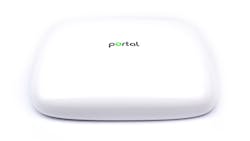New Router Gives Access to Troublesome Wi-Fi Spectrum
From two young engineers forming Intel nearly fifty years ago, to software programmers at Facebook leaving to build a question-and-answer website, the story of Silicon Valley is largely the story of engineers leaving large corporations to strike it out on their own. One group of engineers was following that script when they departed Qualcomm Aetheros to build a better Wi-Fi router.
The router is known as Portal and the secret to its unique design is an area of wireless spectrum in the 5 GHz range seldom used by other routers. While most routers only access one or two channels in that frequency band, the router grants access to six different channels, helping devices to avoid crowded Wi-Fi by jumping between channels. More channels means that individual devices have more bandwidth to play around with.
“Our engineers created Portal to fundamentally redefine the consumer Wi-Fi experience,” says Terry Ngo, chief executive of Ignition Design Labs, the company behind Portal. “We give you three times more spectrum for faster video downloads, elimination of buffering issues, and an improved overall internet experience.”
Ignition Design Labs built their new router under the notion that most other routers fail to address the main problem with Wi-Fi. Billions of devices compete for limited spectrum, especially in cities and apartment buildings, and all that competition causes traffic jams that slow down Wi-Fi. That problem is heightened by the fact that people are using Wi-Fi for applications that consume huge amounts of data, like streaming video and playing video games.
That is one of the reasons that the 5 GHz spectrum has slowly become prime real estate for wireless technologies. Devices like Google’s OnHub router are breaking ground in the spectrum to avoid overcrowding in the 2.4 GHz band. Qualcomm and other chipmakers are increasingly using the spectrum to offload cellular data with LTE in the unlicensed spectrum (LTE-U) and Licensed Assisted Access.
Ignition Design Labs was only given regulatory access to the rest of the 5 GHz spectrum—which was originally reserved for weather radar systems—with some caveats. The company had to ensure that wireless signals on the unused lanes would not interfere with radar signals. Normally, devices must use dynamic frequency selection to sidestep radar in these channels, which account for roughly 65% of the entire 5 GHz spectrum in North America, and around 80% in Europe and Japan. But that technology is complex and expensive, and so has been largely ignored by Wi-Fi equipment companies.
Ignition Design Labs, however, did not shy away from that spectrum. Portal contains algorithms that detect and track the channels being used by radar signals, steering Wi-Fi signals around them. That same technology also diverts Wi-Fi onto different channels if certain ones get too crowded. Portal can also optimize your Wi-Fi networks by analyzing data on the cloud. The router can track Wi-Fi networks in your neighborhood to figure out which channels have the most bandwidth for your devices. It can even switch channels based on what time of day certain parts of the spectrum are most crowded.
In one demonstration, Portal clocked around 45 Mbits/s download speeds in an Apple iPad located 33 feet away from the router. In comparison, a Netgear Nighthawk router showed download speeds of 5 Mbits/s on the same device in the same location. In a video of the demonstration, the company showed that Portal was able to start streaming ultraHD video faster than the Netgear router could even buffer a regular high-definition video.
Portal contains nine advanced antennas. Four of these are wideband 5 GHz antennas that support Multi-user Multi-Input Multi-Output (MU-MIMO), which allows the router to send data to multiple devices simultaneously using a separate stream for each as though each device had a personal router. Three 2.4 GHz antennas allow devices to run on both Wi-Fi frequencies simultaneously. For larger homes, owners can link together two or more Portals for longer range.
Ignition Design Labs revealed its first prototype at the Consumer Electronics Show earlier this year, and now the company is funding the first production run of Portal through Kickstarter. The campaign reached its goal of $160,000 within two days, while over 1,685 backers have pledged almost $280,000 to the project. There are 53 days remaining in the campaign.

